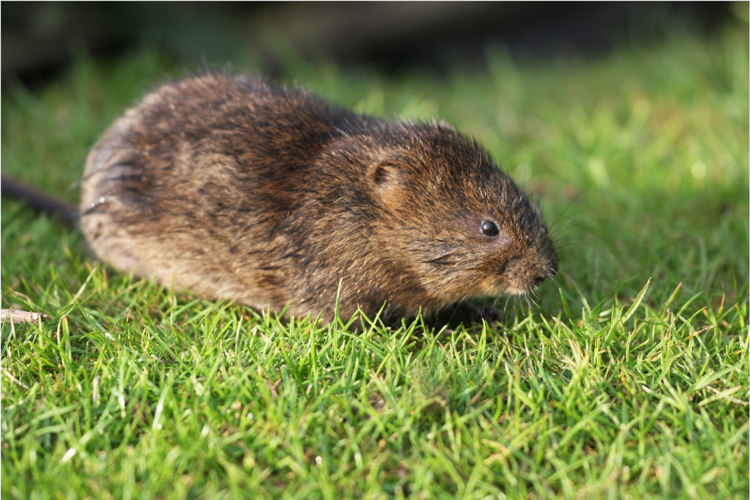Comprehensive Guide to Efficient Vole Parasite Control: Infestation Identification and Treatment Techniques
In the world of efficient bug control, vole infestations present an unique difficulty that demands a tactical technique. These tiny rats, frequently mistaken for mice, can ruin yards, grass, and plants if left uncontrolled. Identifying the signs of vole visibility and implementing targeted treatment approaches are necessary parts of a successful bug management plan. By checking out the nuances of vole habits, recognizing essential indicators of invasion, and examining an array of control options, one can develop a detailed technique to battle these evasive parasites.
Recognizing Vole Behavior
Vole actions is defined by their delving routines and rapid recreation rates, making them a difficult insect to regulate properly. These little rats usually create elaborate passage systems underground, using them for shelter, food storage space, and transportation. Voles are herbivores, eating a variety of plants, light bulbs, roots, and yards, which can trigger substantial damage to gardens, orchards, and grass. Their quick reproductive rate additional makes complex control initiatives, with females with the ability of producing multiple trashes in a solitary year, each containing several children.
Voles are most energetic throughout the morning and evening hours, investing most of their time foraging for food. Their tunneling behaviors not only disturb gardens and grass however additionally make them testing to find and remove. Recognizing vole behavior is critical for effective insect control approaches. By determining their burrow areas, checking feeding locations, and executing targeted control techniques, such as trapping or environment adjustment, vole invasions can be taken care of successfully.
Indicators of Vole Problem

Avoidance Strategies
Executing effective avoidance approaches is critical in minimizing vole problems and protecting greenery from their damaging feeding practices (vole pest control). To stop vole invasions, it is vital to start by getting rid of possible food resources and shelter. Maintain yard and vegetation trimmed short, remove weeds and debris, and keep a clean yard or grass to make the location much less appealing to voles. Mounting barriers such as equipment towel or below ground fencing can additionally aid discourage voles from getting in certain areas. Additionally, decreasing excess dampness by taking care of leaky pipes and guaranteeing correct drainage can make the environment much less welcoming for voles.
On a regular basis evaluating the home for signs of vole task, such as paths and burrow openings, is vital for early discovery and timely action. If vole task is believed, take into consideration utilizing traps or repellents strategically placed near their pathways.
Non-Lethal Control Approaches
To successfully handle vole populaces while prioritizing gentle techniques, non-lethal control techniques provide useful options for reducing vole damage in gardens you could check here and landscapes. One effective technique is the use of physical obstacles such as hardware fabric or cord mesh to secure prone plants. These barriers can be buried at the very least 12 inches bent and deep at a 90-degree angle to protect against voles from delving below. Additionally, environment alteration can prevent voles by minimizing their liked food resources and concealing spots. Preserving a well-mowed grass, removing debris, and keeping greenery trimmed can make the atmosphere much less appealing to voles.

Lethal Control Options
One efficient method for addressing vole infestations in gardens and landscapes includes the tactical usage of deadly control choices. When faced with an extreme vole invasion that non-lethal approaches have failed to consist of, executing dangerous control procedures ends up being crucial. check out this site Generally, when using lethal control choices, it is vital to do so properly and in conformity with local laws to properly take care of vole infestations.
Verdict
Finally, efficient vole pest control calls for an extensive understanding of vole habits, recognition of signs of problem, application of avoidance strategies, and usage of both dangerous and non-lethal control methods. By combining these techniques, people can properly handle vole populations and shield their residential property from damage. It is essential to address vole invasions immediately to stop further issues and lessen the influence on the surrounding setting.
Offered the intricate tunnel systems and fast reproduction rates characteristic of voles, acknowledging the indicators of vole problem ends up being crucial in reliable parasite control. One of the main indications of vole visibility is the visibility of surface area paths or trails in turf or snow, usually regarding 1-2 inches broad, produced as voles take a trip between their burrows and food sources.To efficiently manage vole populations while prioritizing humane methods, non-lethal control techniques provide practical solutions for reducing vole damages in yards and landscapes.One reliable technique for attending to vole invasions in landscapes and yards includes the wikipedia reference tactical use of dangerous control choices. vole pest control.In conclusion, reliable vole bug control requires an extensive understanding of vole actions, identification of signs of problem, application of prevention approaches, and usage of both lethal and non-lethal control methods
Comments on “Shield Your Yard: Efficient Vole Control Techniques”